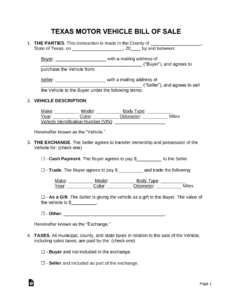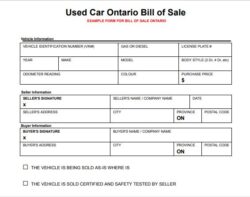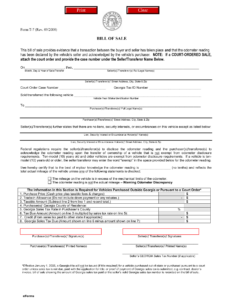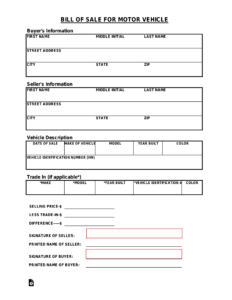Buying or selling a vehicle can be an exciting time, but it also comes with a fair share of paperwork and legalities. One of the most crucial documents you’ll encounter during this process is the bill of sale. It acts as a legally binding agreement that confirms the transfer of ownership from one party to another, providing a clear record of the transaction for both the buyer and the seller.
Having a reliable bill of sale template for vehicle ready can save you a lot of time and potential headaches. It ensures all the necessary details are captured accurately, helping to prevent misunderstandings or disputes down the line. Think of it as your essential safety net, protecting both your interests and providing peace of mind during what can be a significant financial transaction.
Why You Absolutely Need a Vehicle Bill of Sale
When you’re dealing with something as valuable as a vehicle, leaving things to a handshake agreement is just asking for trouble. A properly filled-out vehicle bill of sale serves as irrefutable proof of the transaction, protecting both the buyer and the seller in numerous ways. For the buyer, it establishes legal ownership, which is essential for registering the vehicle, obtaining insurance, and proving that the vehicle wasn’t stolen. For the seller, it proves that they no longer own the vehicle, absolving them of liability for any accidents or tickets that occur after the sale date.
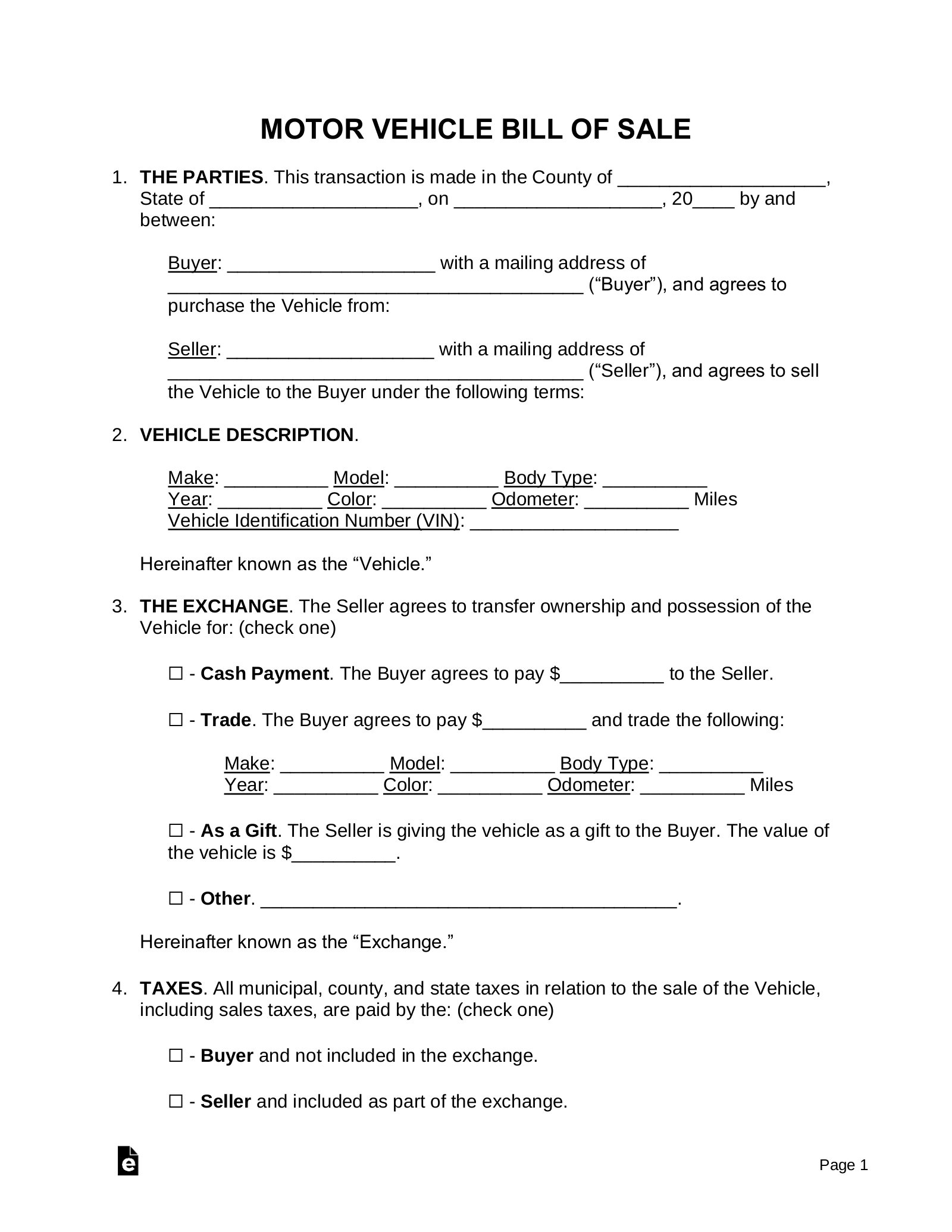
Without this document, proving the terms of the sale, the date it took place, or even that a sale occurred at all, becomes incredibly difficult. This can lead to legal complications, financial losses, or even issues with law enforcement if the vehicle’s ownership isn’t clearly documented. It’s truly a foundational piece of paperwork for any private vehicle sale.
Key Information to Include
To be effective, your bill of sale must contain specific, crucial information. Missing any of these details could weaken the document’s legal standing or create ambiguity. It’s not just about filling out a form; it’s about creating a comprehensive record.
Here’s a breakdown of what every robust bill of sale should clearly state:
- Buyer and Seller Information: Full legal names, addresses, and contact information for both parties.
- Vehicle Details: Comprehensive description of the vehicle, including make, model, year, color, Vehicle Identification Number (VIN), and current odometer reading.
- Sale Price and Payment Method: The agreed-upon purchase price of the vehicle, along with how the payment was made (e.g., cash, check, bank transfer).
- Date of Sale: The exact date the transaction took place, which is vital for calculating ownership transfer dates for registration and insurance.
- Signatures: Dated signatures of both the buyer and the seller, indicating their agreement to the terms.
- As-Is Clause (if applicable): A statement indicating that the vehicle is being sold "as-is," meaning the buyer accepts the vehicle in its current condition with no warranties from the seller.
Including all these points meticulously ensures that the document is legally sound and leaves no room for misinterpretation. It truly is the backbone of a smooth vehicle transfer.
Crafting Your Own Bill of Sale Template: What to Consider
While various generic templates are available online, creating a personalized bill of sale template for vehicle can provide an added layer of security and convenience. This way, you can tailor it to your specific needs and ensure it includes any unique clauses or state-specific requirements that might apply to your location. When drafting or customizing a template, think about the practical aspects of its use and how it will serve you in the future.
Consider local laws regarding vehicle sales. Some states might require notarization of the bill of sale, while others might have specific language that needs to be included, especially concerning "as-is" sales or disclosures about the vehicle’s history. Doing a quick search for your state’s Department of Motor Vehicles (DMV) website can provide valuable insights into these requirements, ensuring your template holds up legally.
Beyond the core information, you might also want to include sections for:
- Trade-in Information: If a trade-in vehicle is part of the transaction.
- Lien Holder Information: If there’s an outstanding loan on the vehicle being sold.
- Witness Signatures: Though not always required, having a witness sign can add another layer of verification.
Once you have your template ready, remember to print at least two copies: one for the buyer and one for the seller. Both parties should sign both copies, and each should retain an original for their records. This ensures that both parties have an identical, legally valid document.
Having a robust bill of sale in hand, whether you’re buying or selling, makes the entire process incredibly straightforward and transparent. It’s the ultimate safeguard that allows you to move forward with confidence, knowing all the legal bases are covered and your interests are protected. It truly simplifies what could otherwise be a complicated process.
